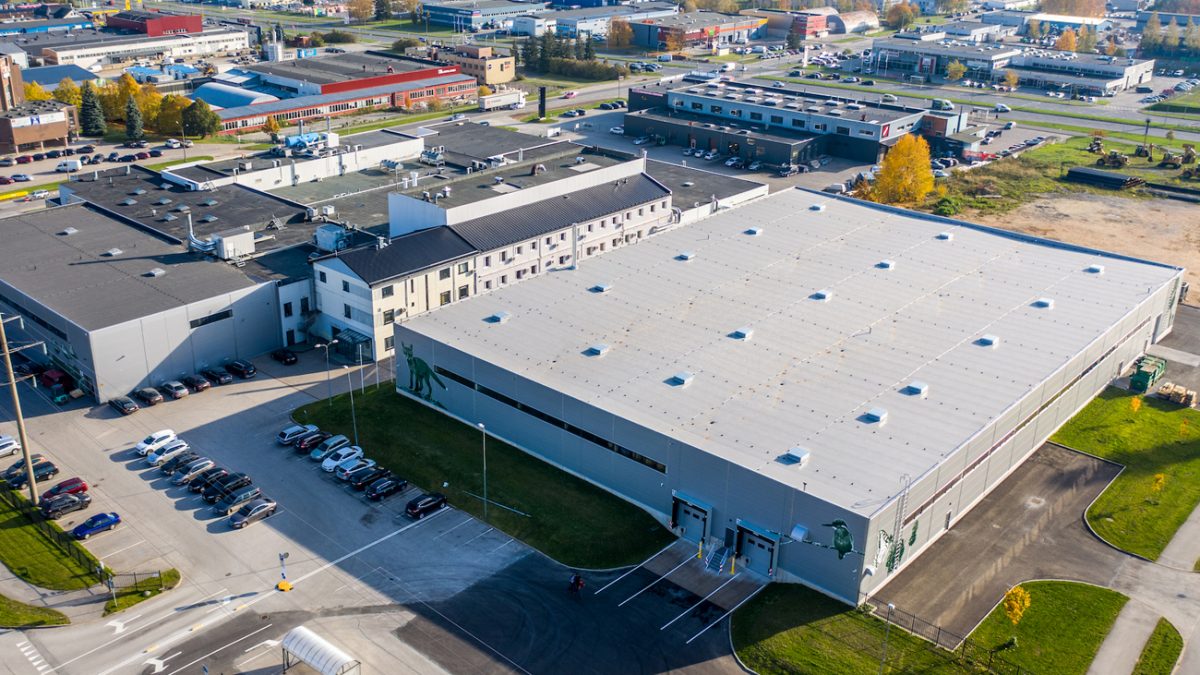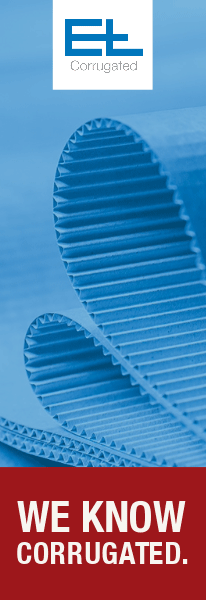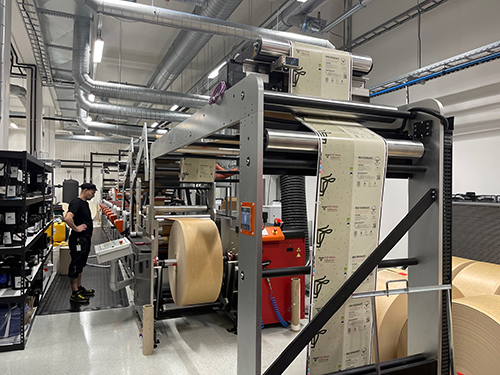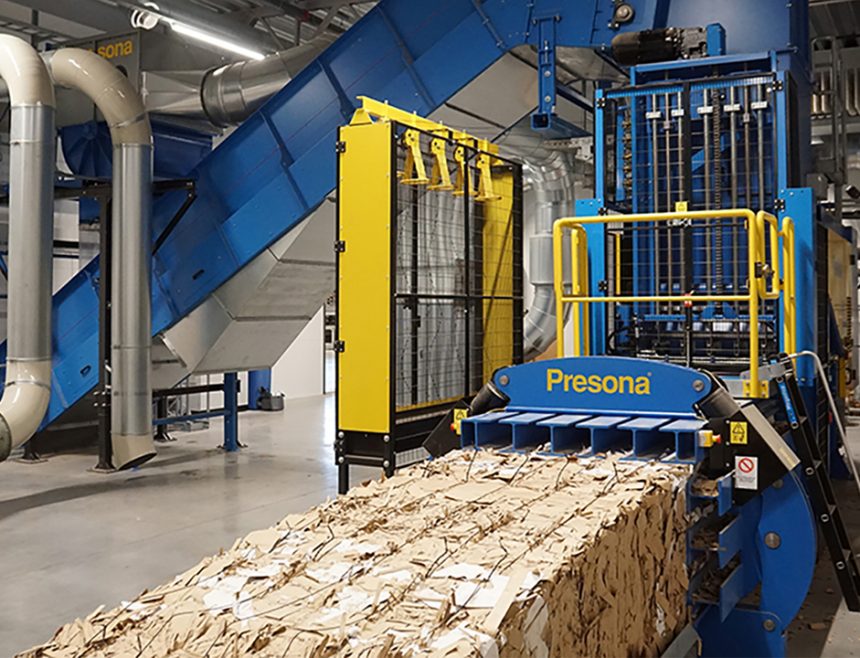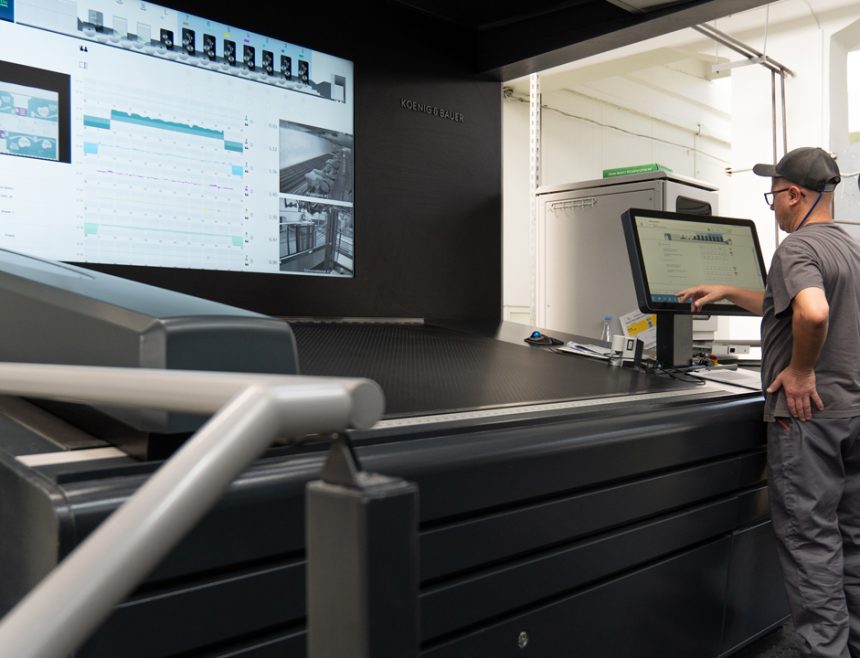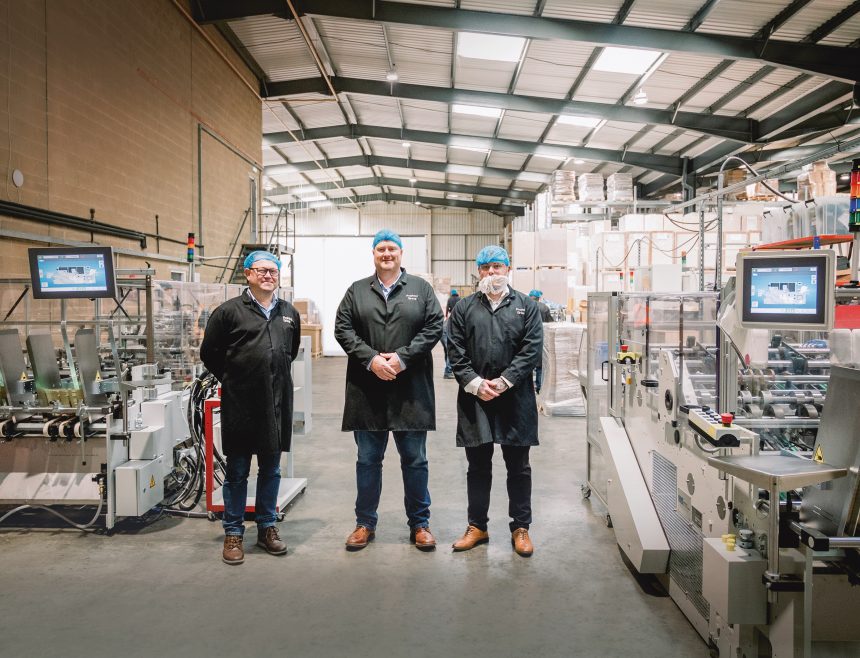Kroonpress Ltd, which is part of Media Investments & Holdings Ou, began life in Tartu, Estonia in 1990, and in the intervening years has grown to become one of the leading offset print houses in the Baltic states and Scandinavia. Andres Kull, who was appointed CEO in 1996, explained the background to this successful business that has seen a transformation in recent times.
 Kull (pictured left) said, “The company built its reputation principally as a publication printer, predominantly newspapers and magazines, before making the move into commercial print with home delivery items and direct mail – all produced on sheet fed offset presses. By the mid 1990s it had grown to employ 250 people and had a turnover of €40m, but I could see times were changing. The growth of the internet was having a major impact on our business, and I knew we needed to diversify.”
Kull (pictured left) said, “The company built its reputation principally as a publication printer, predominantly newspapers and magazines, before making the move into commercial print with home delivery items and direct mail – all produced on sheet fed offset presses. By the mid 1990s it had grown to employ 250 people and had a turnover of €40m, but I could see times were changing. The growth of the internet was having a major impact on our business, and I knew we needed to diversify.”
Like many others in the commercial print market at that time, the viable choices were few – move into large format (considered too risky because of the size of investment required), go digital (the market was still too small in those days), or look at what package printing had to offer. And this proved to be the best decision to make under the new brand name of Kroonpak.
Initially using its offset capability with offline converting, Kroonpress set out to offer the same level of quality and reliability to its packaging customers as it had always done to its commercial customers. Kull continued, “We’ve always understood the meaning of the words ‘urgent’ and ‘must’! The company prides itself on the quality of its manufacturing process, using high-end machinery and precision tools. We buy our dies, stamping tools, and other consumables from the most reputable suppliers and everything we use is tested, checked, and confirmed for safe use on our products.”
As demand for its packaging products grew, the company began to research alternative production methods, and in particular what inline flexo had to offer. “We did not have sufficient offset capacity to fulfil the growing orders, especially when we landed a contract with KFC to produce the side blanks for their cups and buckets,” explained Kull. “To us, it was evident this was an ideal job for an inline flexo press, especially as it would offer something different to what our competitors could do.”
Kull made his first contact with Edale in 2021. He explained, “From the outset it was clear that they understood the carton market and its requirements in terms of material thickness, and a demo by video was sufficient to convince me that I had found the right partner to work with.” The result was an order for three Edale machines; two FL5 model presses and an FDC-600 flat-bed die cutter.
The first press to be installed was a nine-colour FL5, and this was followed by a five-colour FL5, both with 650mm web width. The first press, which works with the FDC unit handles more complex jobs and the shorter runs, while the second handles the long run roll-to-roll work. Capabilities include front and reverse side printing, laminating, foiling, slitting, and rewinding, flat-bed die cutting, embossing, and stripping, with finished blanks delivered onto a shingle conveyor for easy removal.
The rewind and slitting facility allows for reel-to-reel jobs to be run without changing the layout of the press. The versatility of the FL5 is complemented by the addition of both hot air drying and switchable LED/Arc lamp UV curing. This allows different inks to be used for specific applications.
The second FL5 also has movable turn bars for front and reverse side printing with the capability of handling 1500mm diameter rolls to reduce the number of changes per shift.
Kull added, “Some printers are concerned about the switch from offset to flexo, but we had no difficulty. In fact, with an expensive substrate like cartonboard, where waste can be costly, the inline flexo production method is effective. Set-up and running to the first saleable sheet on an offset press is far longer and more wasteful than on the Edale presses. As long as the carton format fits, it’s a much better production process. It’s a good robust machine, easily capable of handling the 700-micron stocks that we use. Our priority is always print stability, and on that score, we have no issues.”
What most appealed was the single-pass production capability of a modular narrow web press. This also brings the advantage of an integrated engineering solution from a single source. He added, “You can buy a press and die-cutter individually and hope they will be compatible – but you can never be sure – with the FL5 and FDC-600, all the responsibility for engineering is in one place.”
New Markets
It’s this single-pass facility that has opened new markets for Kroonpak, which specialises in short to medium run work. Quantities vary greatly, but the market is price sensitive, so all options are considered before quoting a job.
The move to flexo for cartons has thrown up an interesting comparison. “When we run cartons through the offset press, we use UV inks that are expensive and quite tacky. This makes a difference as the cartonboard is somewhat fragile and so it’s easy to destroy the coating layer. Flexo inks are more liquid and don’t pose the same problems,” said Kull.
What Kroonpak had to come to terms with is the contrast in production methods from offset to flexo. He added, “When you’re producing several types of packaging in the same building it’s important to be able to perform cross-product colour management without visible deviation between products and batches. It’s important that our customers’ boxes, cups, and labels all look the same.”
This different approach is already paying dividends. Kroonpak’s operators like the new presses and value their proven capability. In particular, the integration of the FDC unit has been a real winner.
Typical work at Kroonpak includes various carton boxes, manufactured with and without windows, clamshell and crashlock bottom boxes, trays with and without partition walls, and a large variety of sleeves. Kroonpak also produces paper cups in various sizes, plus double wall options for hot drinks, as well as bowls and buckets from 125cl (43oz) to 385cl (130oz).
The company also has a reputation for the design and prototyping. Kull continued, “Smart designs, safety, ease of use, and sustainability are the guidelines for modern packaging, but not everything can be market-ready from the get-go. It takes time, effort and many prototypes before the perfect result is achieved.”
Sustainability is something of a by-word at Kroonpak. He said, “We always keep the environment in mind, so we’re constantly looking to downsize and eliminate plastic usage, while striving for a smaller footprint and better recyclability of our products. If we can help our customers to redesign their packaging to be more environmentally friendly, then our expertise will have been used well.”
Summing up his experience with the FL5 technology to date, Kull concluded, “Edale listened carefully to what we required and matched their technology to fit. To my mind integrated and modular is the way forward because it offers maximum flexibility, and you need to be nimble to keep pace with the rapid changes in market demand.”
Louise Bailey, Business Development Manager, Edale, added, “We are delighted that Kroonpak chose Edale from a host of possible narrow web flexo manufacturers and that the technology has delivered what it promised. It’s a brave decision to move from sheet fed offset to inline flexo but their diligent approach to the whole project left us in no doubt that it would be a success, and we congratulate them on the achievement.”
Foot Note
The case for producing cartons inline flexo has been around for decades – I was reporting on it 40 years ago! Maybe the shake-up in thinking that the global pandemic has forced upon all of us and the subsequent re-evaluation of the ‘status quo’ might encourage more carton houses to consider this diversification – after all, it’s well proven! NC.

